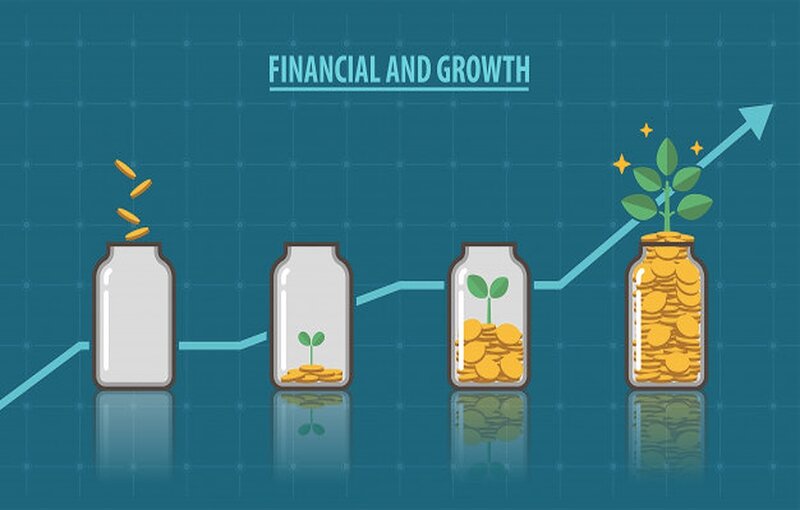What should a long term investor do as PF contribution beyond 2.5L is to be taxed

In the Union Budget of 2021, interest on PF contributions (contribution made by the employee) above Rs 2.5 lakhs will be taxable as per the income tax rate of the employee. This has caused concerns among many salaried investors. In this article, we will discuss about who will get affected by this, how they will be impacted and possible solution.
How much do employees contribute to Provident Fund?
There are two kinds of provident funds – Employee Provident Fund and Voluntary Provident Fund. In Employee Provident Fund (EPF), you contribute 12% of your basic salary to your Provident Fund account. Your employer makes a matching contribution. The money in your provident fund account earns a specified rate of interest, set by the Government of India. The current rate of interest in Provident Fund is 8.5%. The interest earned on PF maturity amount was entirely tax free prior to the tax change announced in 2021 Budget.
Apart from making EPF contributions, you can also make contributions to your Voluntary Provident Fund (VPF) account. Unlike EPF, VPF contributions is not compulsory, it is voluntary. You can contribute up to 100% of your basic salary and dearness allowance (DA) to your VPF account. Employees make VPF contributions for two benefits:-
- Like EPF, VPF contributions qualify for tax savings under Section 80C. Since you can contribute up to 100% of your basic salary, you can use VPF to maximize tax savings under Section 80C.
- VPF offers higher rate of interest compared to all Government Small Savings Schemes e.g. PPF, NSC, KVP etc.
- Like EPF, VPF maturity proceeds were tax free, prior to the tax change announced in this year’s Budget. Many investors used VPF to earn tax free interest.
Who will be impacted by this tax change?
If your EPF and VPF contributions exceed Rs 2.5 lakhs per annum, then interest on the excess contribution will be taxed as per your tax rate. Let us assume that your basic salary is 50% of your total compensation and that you are not making any VPF contribution.
If your total annual compensation is Rs 42 lakhs, then your basic pay will be Rs 21 lakhs. Your annual EPF contribution will be 12% of Rs 21 lakhs, i.e. Rs 2.52 lakhs which exceeds the limit on non taxable interest.
Therefore if your total compensation is less than Rs 42 lakhs, then you will not be impacted by this tax change. Please note that we have an assumption of basic salary being 50% of total compensation. To know whether your PF contributions will be taxed please refer to your PF statement for the current financial year, which your employer can provide or you can check online at https://unifiedportal-mem.epfindia.gov.in/ using your UAN number.
In the above example, we assumed that you are not making any VPF contributions. However, there may be many salaried investors whose EPF contributions do not exceed Rs 2.5 lakhs, but together with VPF contributions, may exceed the Rs 2.5 lakhs limit. Many investors make substantial VPF contributions to earn high rate of tax free investments. If you are making substantial VPF contributions, you should check your PF statements and how much VPF contribution you make or plan to make, to know whether you will be impacted by this tax change.
How much will be the impact?
The current EPF / VPF interest rate is 8.5%. If your annual EPF / VPF contribution is Rs 3 lakhs, then interest on Rs 50,000 (excess over the limit set by the Government) will be taxable. The annual interest of Rs 50,000 excess contribution will be Rs 4,050. Assuming you are in the 30% tax brackets, your annual income tax on PF interest income will be Rs 1,215. Over the years, your tax liability on PF interest will increase because your EPF contribution will increase in line with your increment in your basic salary.
What can investors do?
Let us first understand why the Government brought about this tax change. The Government has been for many years now, lowering the interest rates of small savings schemes to reduce their interest obligations. Some investors were using the tax exempt status of PF interest to get tax free interest income. The higher PF interest rate compared to Government small savings schemes provided further incentive to make high PF contributions through the VPF route. This tax change is meant to be a disincentive towards such practices.
On your excess PF contributions, the effective interest rate on excess (above Rs 2.5 lakhs) PF contributions will be = 8.5% X 70% (for investors in the 30% tax bracket) = 5.85%. In the long term future, with overall interest rates declining, the PF interest rate is also likely to fall. With this tax change, long term investors may consider debt mutual funds, which are much more tax efficient. Long term capital gains (investments held for more than 3 years) are taxed at 20% after allowing for indexation benefits. Indexation benefits can result in much lower effective tax rate, reducing your tax obligations.
Factors in fund selection
EPF / VPF investments are usually very long term. Except for some specific circumstances, withdrawal is possible only upon retirement. EPF / VPF investments have very low risks because these are Government schemes.
You should consider the following factors, when selecting debt funds to replace your VPF investments:-
- Long investment horizon: Long duration funds are more suitable for long investment horizons. Since the shape of the yield curve is usually upward sloping, longer duration bonds gives higher yields than shorter duration bonds.
- Visibility of returns: Visibility of returns is important for your long term goal planning. Funds which hold bonds till maturity provide greater visibility of returns.
- Reducing risk over investment tenure: Since these investments are meant for retirement planning and other long term life-stage, the investment risk should reduce progressively over the investment tenure. Maturity roll-down strategy is suitable for reducing your risk over long investment tenures.
- Credit risk: Long investment tenures cover multiple interest rate cycles. That is why over long investment tenures interest rate risk is only temporary. However, credit risk can result in a permanent loss. You should be mindful of credit risks when investing in debt funds.
- Invest in long term debt funds: Long term debt mutual funds which invest in Government Securities (no credit risk) can be a good investment alternative, especially if they roll down the portfolio. Roll down works very well for long term investors because it helps them lock-in current yields for the long term even if interest rates come down in the future. Nippon India Nivesh Lakshya fund which invests in long dated G-Secs and rolls down the portfolio’s maturity may be a good investment option.
Nippon India Nivesh Lakshya Fund – An ideal investment choice
Nippon India Nivesh Lakshya Fund endeavours to take care of investors’ long-term investment objectives by providing them an opportunity to capture the prevailing rates and holding their investment for a long period of time (10 – 25 years). This long duration debt fund is ideally positioned for very long term fixed income investments for the following reasons:-
- Long investment horizon: The scheme predominantly invests in long dated Government Securities (25 to 30 years maturities).
- Visibility of returns: The scheme locks in prevailing yields for the long term due to its hold to maturity strategy. The current yield to maturity (YTM) of the scheme is 6.7% (as on 10th February 2021. Source: Nippon India Mutual Fund). This is the return you will get from the bonds in the scheme portfolio if held till maturity.
- Reducing risk over investment tenure: The scheme has a maturity roll-down strategy. Interest rate risk is directly related to bond maturity. As bond maturity reduces, interest rate risk goes down. In a maturity roll-down strategy, the residual maturity is rolling down (reducing). Therefore, risk will reduce over investment tenure.
- Credit risk: The scheme invests in Government Securities. There is no credit risk in Government Securities because Government Securities have sovereign guarantee, i.e. interest and principal payments are guaranteed by the Government.
Read the detailed fund review of Nippon India Nivesh Lakshya Fund
Nippon India Nivesh Lakshya Fund – Key Portfolio Attributes
- Yield to Maturity: 6.7% (as on 10th February 2021. Source: Nippon India Mutual Fund).
- Average Maturity: 24.06 years (as on 10th February 2021. Source: Nippon India Mutual Fund).
- Modified Duration: 11.19 years (as on 10th February 2021. Source: Nippon India Mutual Fund).
Why invest in Nippon India Nivesh Lakshya Fund?
- High Credit Quality: The scheme invests only in G-Secs
- No interest rate risk over long investment tenures: The scheme holds securities till maturity. Though there will be an interim volatility, but on a long-term basis, the fund is interest rate view agnostic.
- Liquidity: Flexibility to withdraw investments anytime, at prevailing market prices subject to the exit load.
Investors should consult with their financial advisors if Nippon India Nivesh Lakshya Fund is suitable for their investment needs. You should read the Scheme Information Document before investing and discuss with your financial advisor if required.
Mutual Fund Investments are subject to market risk, read all scheme related documents carefully.
Queries
-
What is the benefit of mutual fund STP
Aug 29, 2019
-
How much to invest to meet target amount of Rs 2 Crores
Aug 26, 2019
-
Can I achieve my financial goals with my current mutual fund investments
Aug 24, 2019
-
Can you tell me return of various indices
Aug 19, 2019
-
What would be the post tax return on different investments
Aug 18, 2019
-
Which Principal Mutual Fund scheme will be suitable for my retirement corpus
Aug 16, 2019
-
What is the minimum holding period for availing NCD interest
Aug 4, 2019
Top Performing Mutual Funds
Recommended Reading
Fund News
-
Zerodha Mutual Fund launches Zerodha Nifty Short Duration G Sec Index Fund
Dec 26, 2025 by Advisorkhoj Team
-
Groww Mutual Fund launches Groww Nifty Chemicals ETF
Dec 26, 2025 by Advisorkhoj Team
-
DSP Mutual Fund launches DSP Nifty Next 50 ETF
Dec 19, 2025 by Advisorkhoj Team
-
DSP Mutual Fund launches DSP Nifty 500 Index Fund
Dec 19, 2025 by Advisorkhoj Team
-
Kotak Mahindra Mutual Fund launches Kotak Nifty Next 50 ETF
Dec 18, 2025 by Advisorkhoj Team














